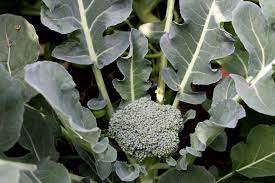 Spring has officially sprung, and it’s time to get your cool season vegetable garden going. Cool season vegetables prefer cooler daytime growing temperatures and tend to lose quality in hot weather. You can plant these crops now, and then again later in the summer for a fall harvest. Adding cool season crops into your gardening plan adds about a month on either side of the growing season. If you live at a high elevation, these may be the only vegetable crops that you can have success with.
Spring has officially sprung, and it’s time to get your cool season vegetable garden going. Cool season vegetables prefer cooler daytime growing temperatures and tend to lose quality in hot weather. You can plant these crops now, and then again later in the summer for a fall harvest. Adding cool season crops into your gardening plan adds about a month on either side of the growing season. If you live at a high elevation, these may be the only vegetable crops that you can have success with.
Hardy cool season crops such as broccoli, cabbage, kohlrabi, onions, lettuce, peas, radish, spinach, and turnips can survive with daytime temperatures as low as 40ۣ° F and can survive a frost. These are the first crops you can get going in your garden in the spring.
Semi hardy cool season crops such as beets, carrots, cauliflower, parsley, parsnips, potatoes, and Swiss chard grow well when daytime temperatures are around 40° to 50° F but are less tolerant of frost at night. You will want to wait until it is not freezing overnight anymore to get these plants going.
If you starting these cool season crops now, you will want to direct sow seeds out in your garden beds. They need a minimum soil temperature of 40° F to germinate, but warmer will get them sprouting even sooner. Keep your soil moist until the plants germinate. If you started seeds indoors, you will want to wait until the plants have a couple sets of true leaves before putting them out. You will also need to harden off the transplants, which is a term that means gradually getting them used to being outdoors before planting them in your garden.
Before you plant seed or transplants, it is a good idea to make sure your garden soil is up for the task. A soil test is the only real way to know the state of your soil. For a vegetable garden, you want to make sure the nitrogen levels are adequate, and that the organic matter content is high enough, around 5% is ideal. If you don’t want to go through the process of getting your soil tested, you can make an annual application of a plant-based compost and mix it in around 6 inches. This should help your soil to be ready to give you a bountiful harvest.
You will want to hold off on planting your warm season vegetables (tomatoes, peppers, cucurbits, beans, corn, etc.) until the danger of frost has passed. Usually in Pueblo, around the second of week of May is a safe bet for these types of plants. These plants need daytime temperatures closer to 60° F and will not tolerate any frost.


